In addition, you can use the Patio throughout most of the year, if not all of it, depending on the local climate. This lets you enjoy the outdoors in your backyard, whether for peace and quiet or hosting a party with friends and family over a meal or a private conversation in the shade. A well-designed patio cover might let you forget you’re even outside. Simphome has covered everything you need to decorate your backyard or Concrete Patio.
An independent patio can be a wonderful place to enjoy the fresh air. You may have a good time there and invite your friends and family to spend quality time with you.
If the weather turns out to be too hot or if it starts to rain, the fun will have to be cut short. This is why you should consider getting a standalone patio cover.
Are you trying to find the perfect one to set off your Patio? We have compiled a list of 10 options for a detached covered patio. As always, Simphome presents you with the list.
10 Detached Patio Cover Video
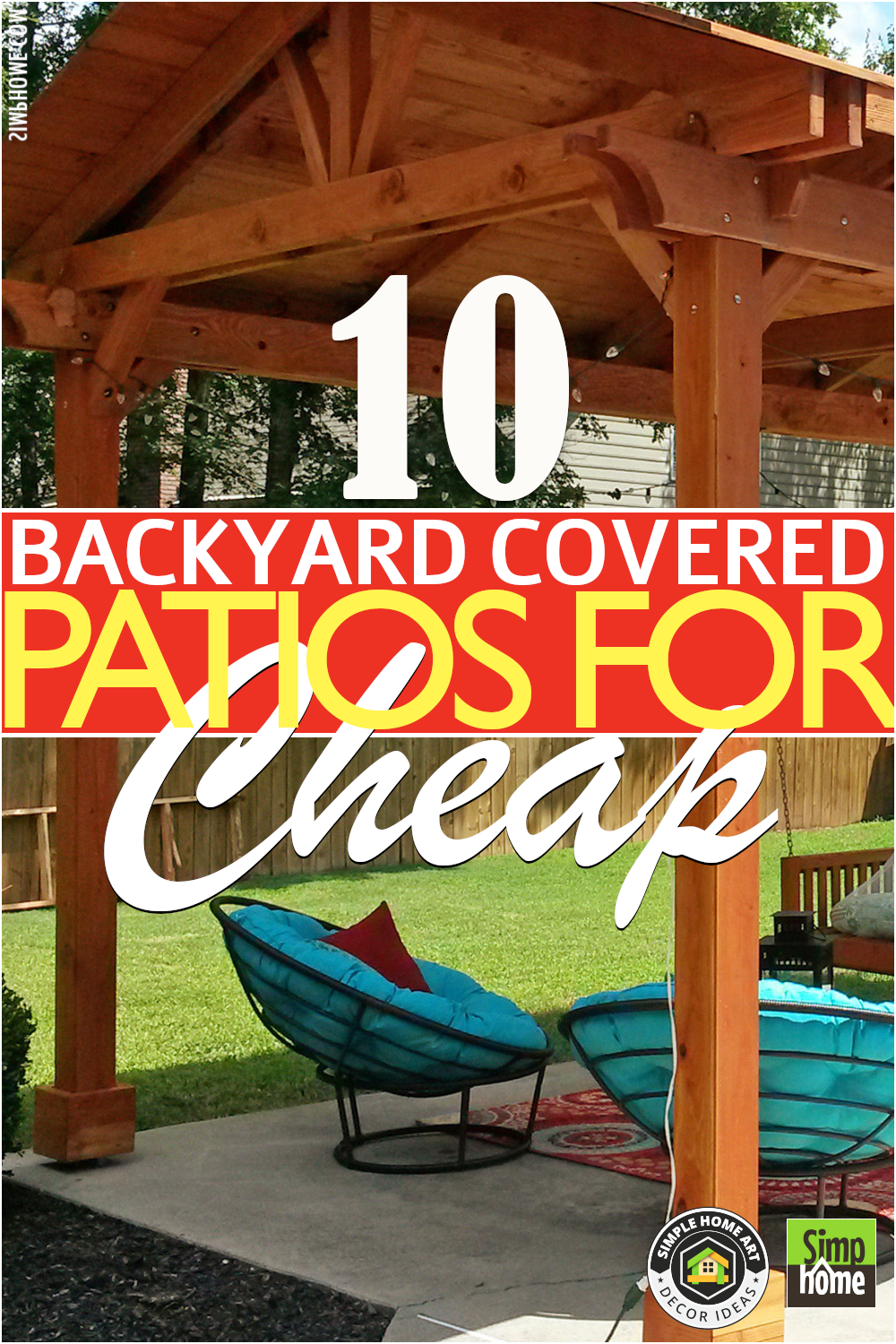
10. Spend Your Time Leisurely in a Covered Outdoor Daybed
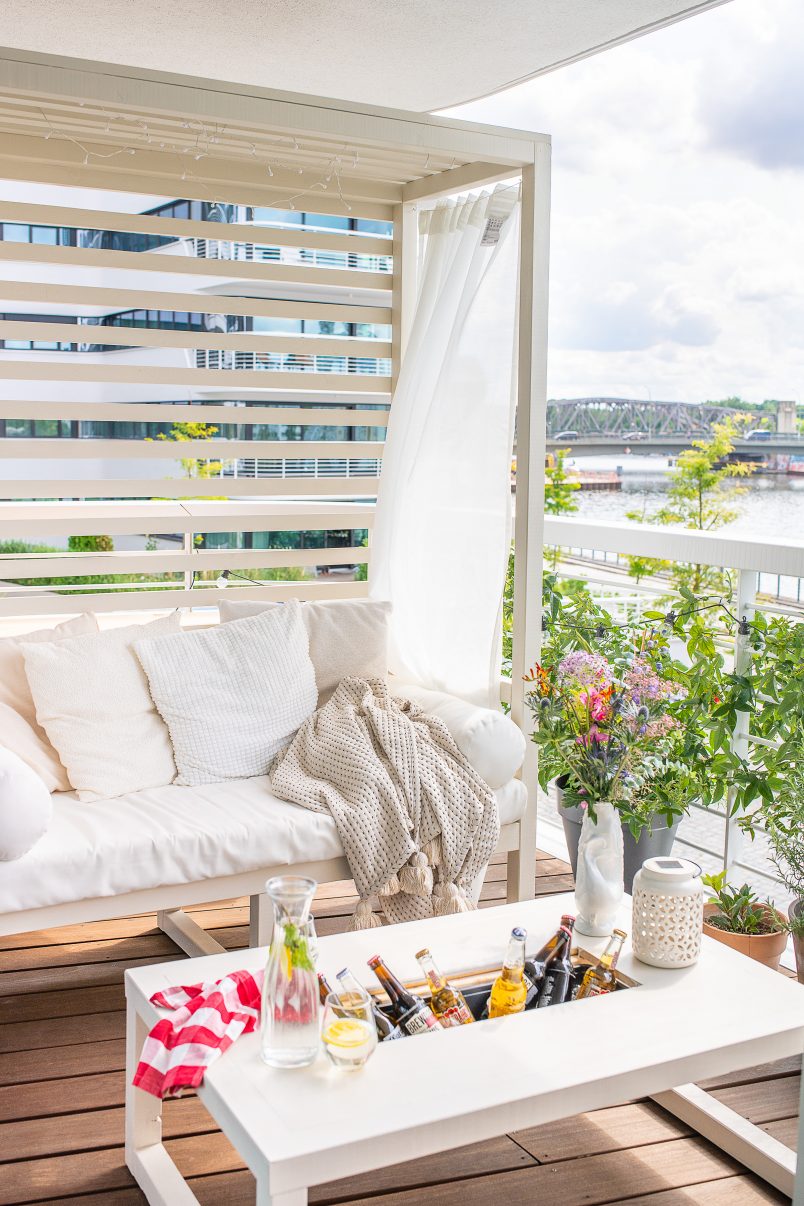 Consider a daybed with a built-in pergola if your Patio or garden is limited in size. Although it appears complicated, anyone with access to basic tools and some shelf lumber can build their own by following these instructions.
Consider a daybed with a built-in pergola if your Patio or garden is limited in size. Although it appears complicated, anyone with access to basic tools and some shelf lumber can build their own by following these instructions.
Before starting the project, ensure your lumber is straight and free of cracks or decay. Next, you’ll need to assemble the bed’s frame and side panels. Then you can create a canopy for the daybed.
After that, you’ll need to fashion cleats and drill the back slats, and side supports into position. Then, fasten the seat slats. If there are any holes, fix them with wood filler before painting. The last stage is putting the finishing touches on the daybed, such as a mattress, pillows, and drapes.
9. Add Freshness Using Green Patio Shade
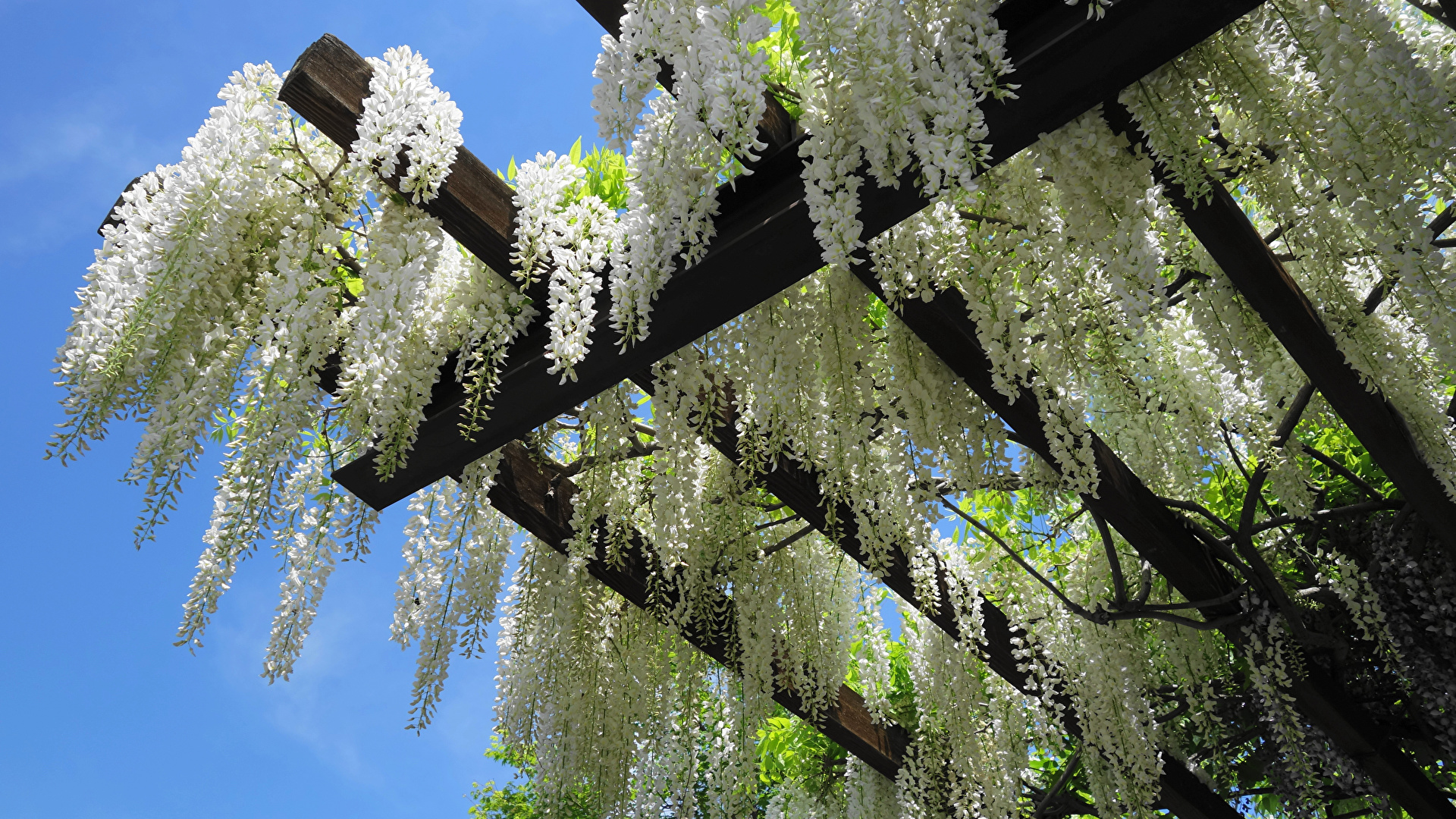 Nothing is more heavenly than spending outdoors under green cover. Climbing plants and flowering vines extravagantly add lush to your outdoor living space. However, you must choose your plants carefully because some grow faster than others.
Nothing is more heavenly than spending outdoors under green cover. Climbing plants and flowering vines extravagantly add lush to your outdoor living space. However, you must choose your plants carefully because some grow faster than others.
For example, trumpet vines or English Ivy love wet soil and can grow vigorously in lush climates. Consider planting them away from any structure because they tend to damage wood and brick.
On the other hand, some vines and climbers are easy to manage. Honeysuckle and Wisteria, for instance, are polite species that you can grow to add shade to your Patio.
8. Be Romantic by Setting a Tarp
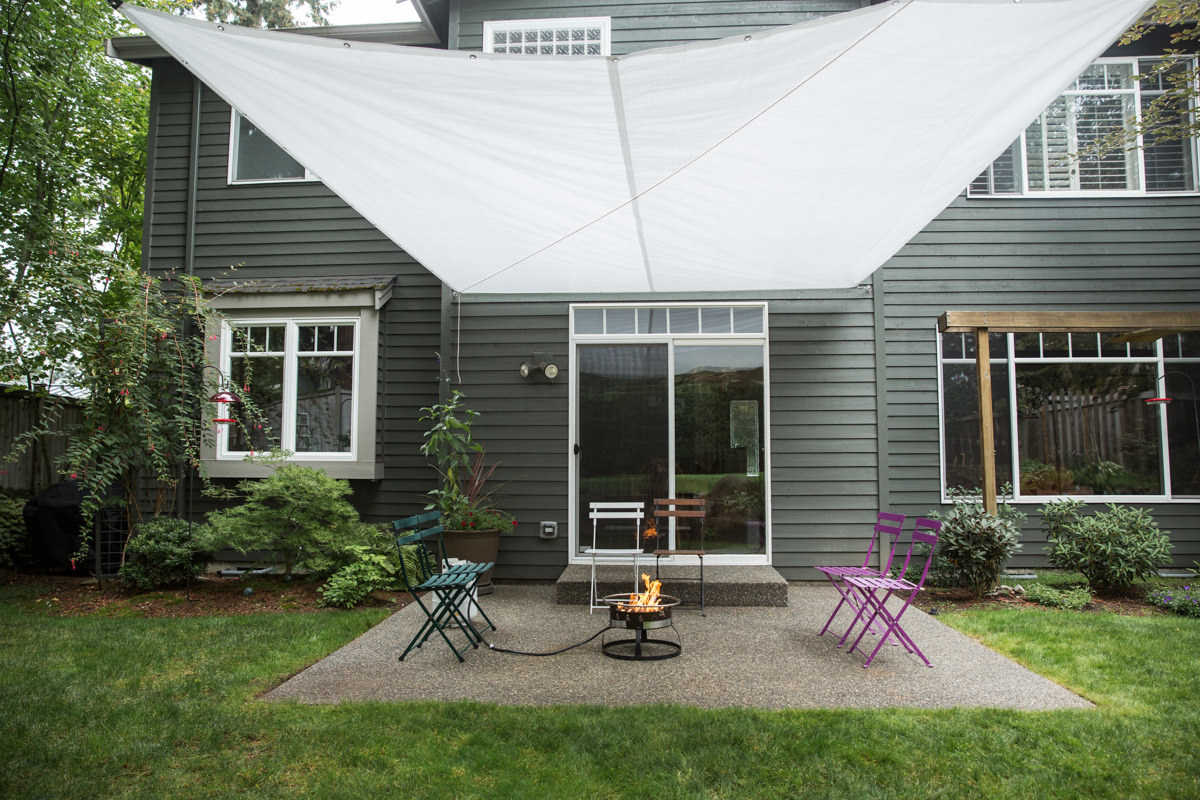 A tarp stretched over a patio creates a casual and charming atmosphere. It doesn’t require a lot of money or time, but it may completely change the look of your backyard.
A tarp stretched over a patio creates a casual and charming atmosphere. It doesn’t require a lot of money or time, but it may completely change the look of your backyard.
Simply string a tarp into various anchors, and you’re good to go. Select the appropriate size and material for the tarp according to your intended purpose.
Mesh and cotton tarp is breathable and allows sunlight, air, and moisture to pass. Choose canvas, vinyl, or poly tarps if you want a water-resistant tarp. However, since it is a temporary outdoor covering, this shade is not intended to protect you from heavy rain.
7. Trellis Patio Cover with Woven Fabric
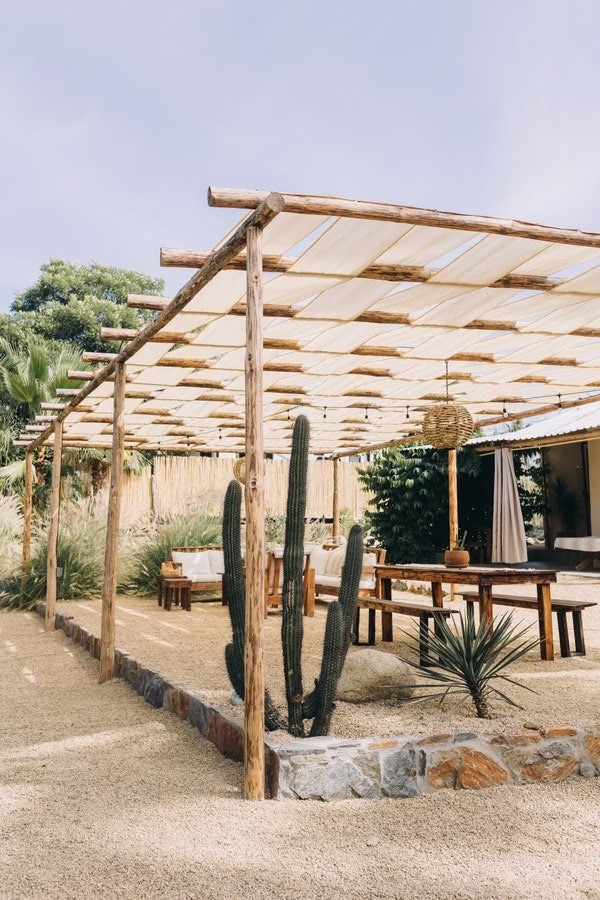 When you hear the word “trellis,” you most likely picture a framework with plants growing on it trailingly. On the other hand, you might employ it to build a shade structure for your patio. It is merely a decorative building when it is not being utilized. However, when you require protection from the sun’s sweltering heat, you can weave some fabric onto the trellis.
When you hear the word “trellis,” you most likely picture a framework with plants growing on it trailingly. On the other hand, you might employ it to build a shade structure for your patio. It is merely a decorative building when it is not being utilized. However, when you require protection from the sun’s sweltering heat, you can weave some fabric onto the trellis.
Prepare several timbers to obtain a cover that is identical to this one. The size of the trellis you plan to construct will determine the number of posts you need to use. Then, by adjusting the distance that separates each panel, you can produce a number of unique layouts for covering the space.
6. A Large Parasol for Your Cover-Up Project
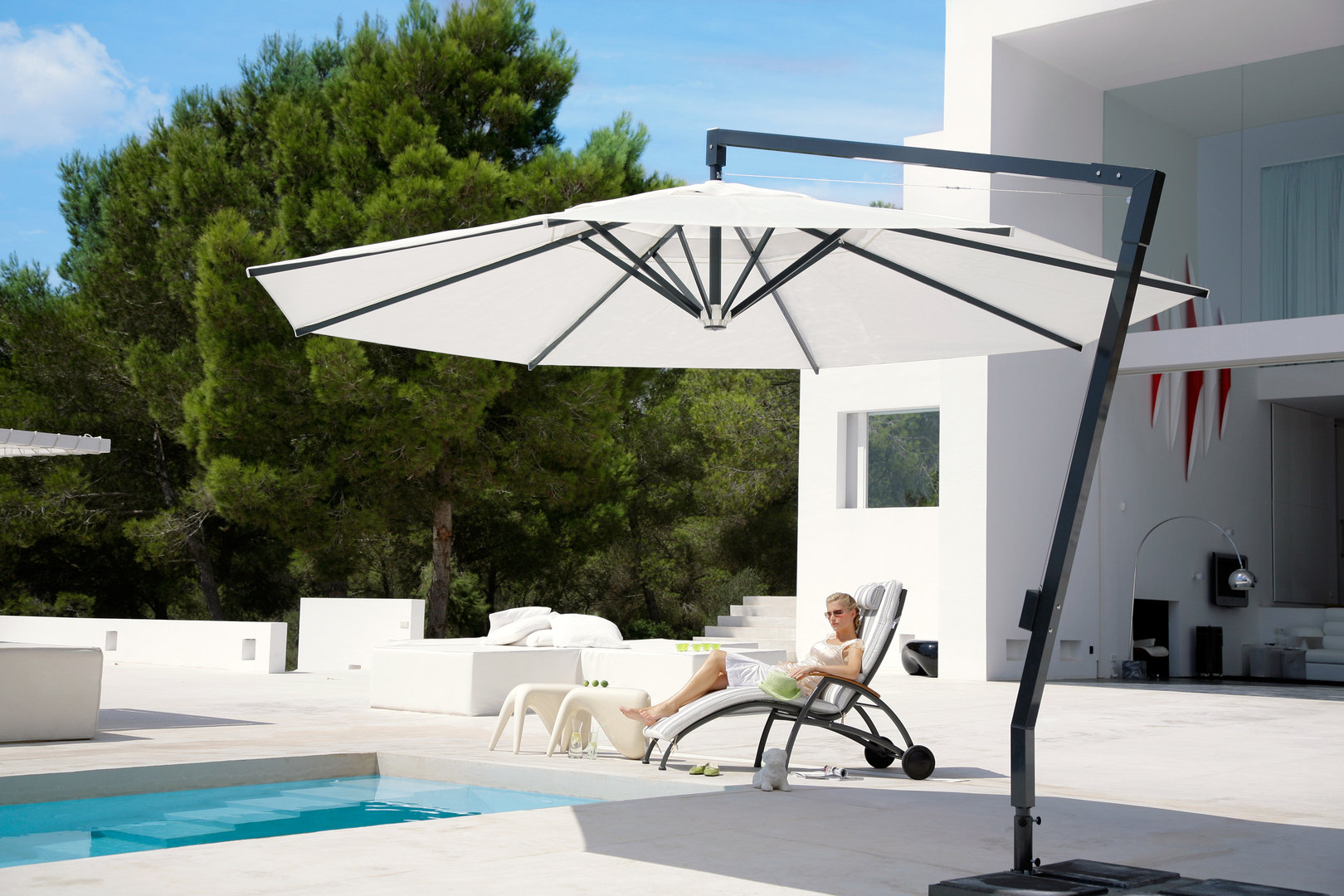
Pick a model with a substantial base to keep it stable on gusty days, but make sure it’s easy to move so you can follow the sun’s arc throughout the day. This will make it ideal for outdoor parties and unexpected feasts.
For example, go for the Vitino Pendulum Tilt Garden Parasol by Tribu, which boasts a sturdy side arm constructed of anodized aluminum that allows the parasol to rotate 360 degrees and tilt.
A tilting umbrella is a perfect option if you want it to be able to pivot around. It has an additional joint about three-quarters of the pole from the base, so you can easily change the umbrella angle.
The cantilever umbrella has a more solid and extensive support base for leisure situations, although it makes it less portable.
5. Add New Elegance by Hanging Curtains
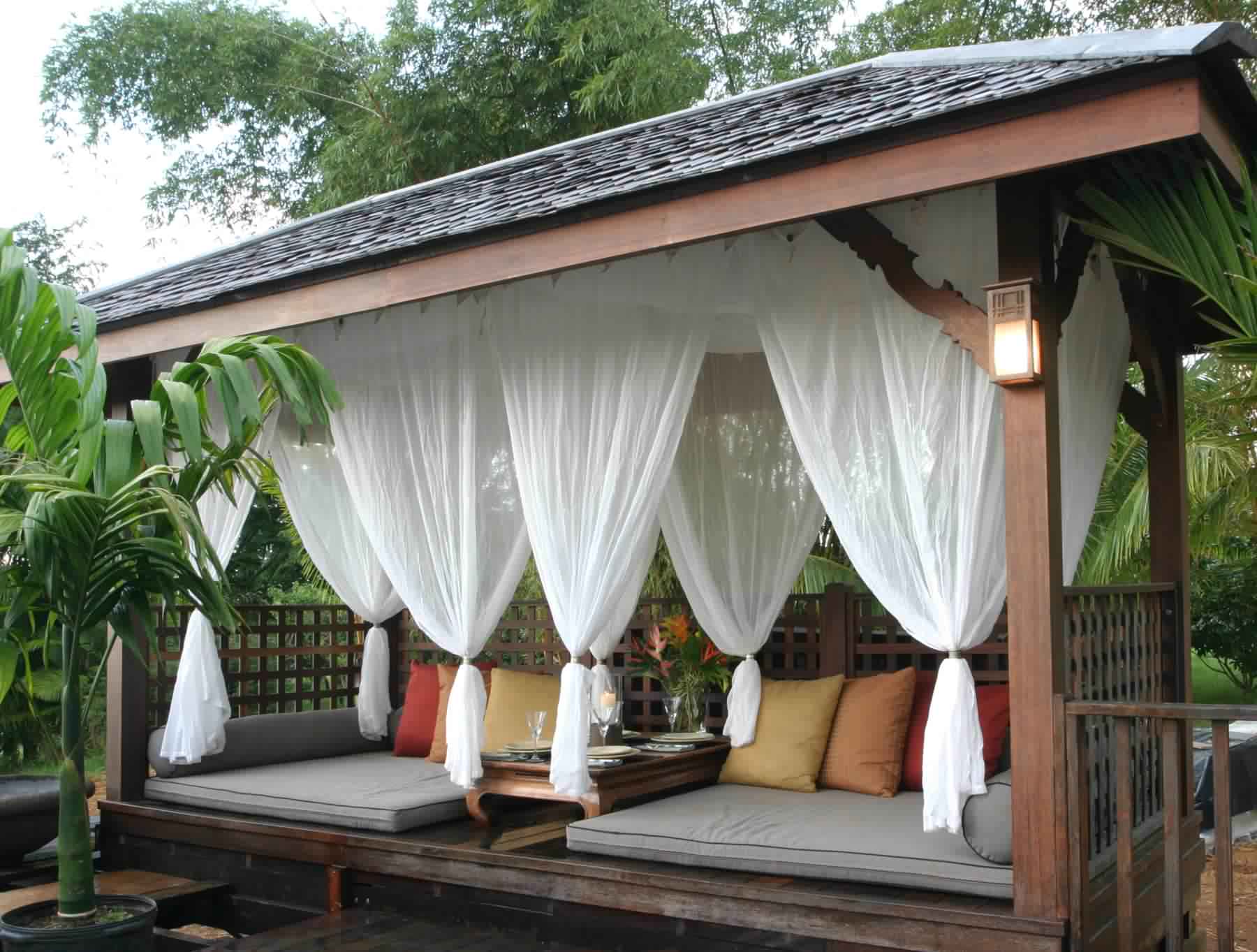 Consider this as you construct the Patio’s roof. Curtains are a great way to soften the view of hardscapes. You can relax even in the hottest part of the day under their lovely, sophisticated shade. You should, however, be familiar with the varieties of drapes that work best in your garden and for your needs. For an outdoor display that doesn’t weigh a ton but is still sturdy and won’t fade in the sun, use an olefin, often known as polypropylene or acrylic. Although it is not as long-lasting as acrylic, polyester mixes are the greatest option for those on a tighter budget.
Consider this as you construct the Patio’s roof. Curtains are a great way to soften the view of hardscapes. You can relax even in the hottest part of the day under their lovely, sophisticated shade. You should, however, be familiar with the varieties of drapes that work best in your garden and for your needs. For an outdoor display that doesn’t weigh a ton but is still sturdy and won’t fade in the sun, use an olefin, often known as polypropylene or acrylic. Although it is not as long-lasting as acrylic, polyester mixes are the greatest option for those on a tighter budget.
4. How to build A freestanding patio with a Rustic Cover
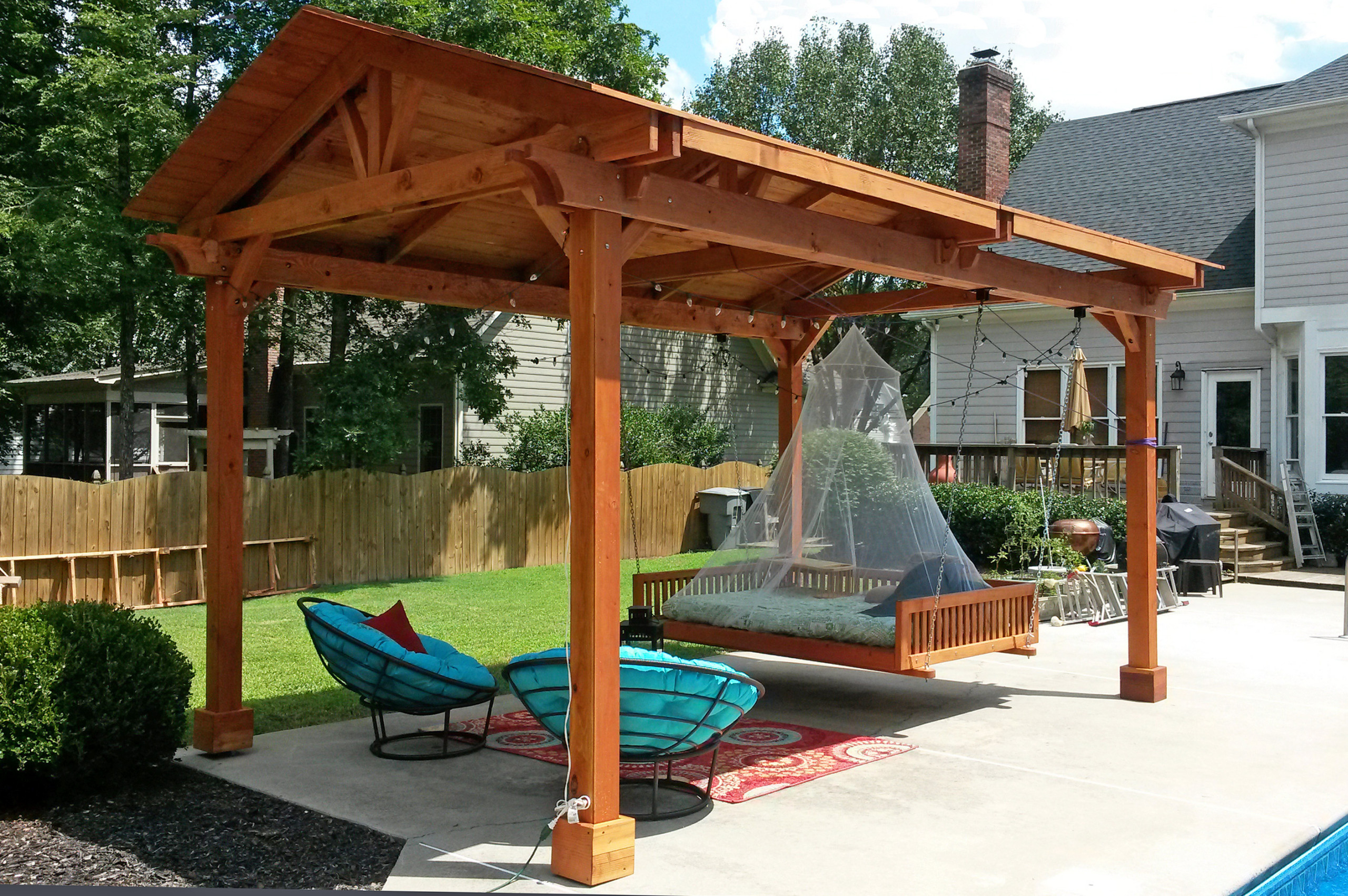 When designing a freestanding patio cover, you first need to determine where to build it and then mark the area using stakes, rope, or spray paint. Then dig out holes that have at least 24 inches deep and 9 inches wide. Because woods are prone to deterioration, add gravel to each hole. When the holes are ready, you can place posts and brace them with boards for support.
When designing a freestanding patio cover, you first need to determine where to build it and then mark the area using stakes, rope, or spray paint. Then dig out holes that have at least 24 inches deep and 9 inches wide. Because woods are prone to deterioration, add gravel to each hole. When the holes are ready, you can place posts and brace them with boards for support.
Make sure the level of each post is precise. Then secure the posts with a mixture of cement. Let it dry for at least 24 hours before continuing to the next steps. Then, assemble the joist beams to the main posts. Then build the roof. Make it several inches longer than your Patio.
3. A Tongue and Groove Styled Cover
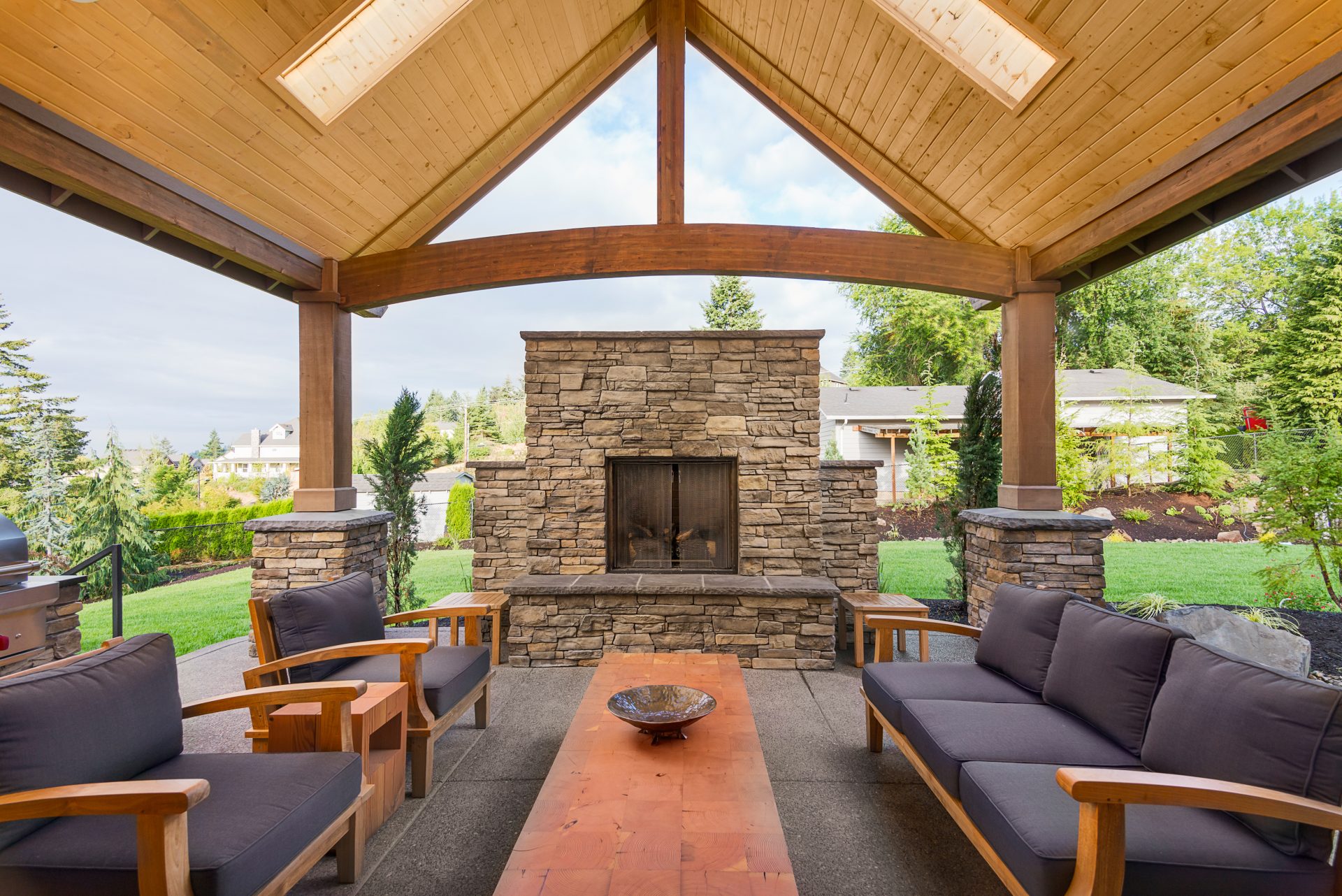 The tongue-and-groove ceiling is epic. It improves the patio cover and only involves gluing or nailing. This design can be natural, stained, or painted. The dark stain makes the cover look sophisticated and stylish, while the lighter stain makes it look natural and rustic.
The tongue-and-groove ceiling is epic. It improves the patio cover and only involves gluing or nailing. This design can be natural, stained, or painted. The dark stain makes the cover look sophisticated and stylish, while the lighter stain makes it look natural and rustic.
However, don’t hesitate to ask for guidance when creating tongue-and-groove patio coverings. First, the tongue-and-groove boards shrink and stretch with weather changes. Second, unfinished tongue-and-groove boards laid in humid summer might be a disaster in winter.
There will be incomplete stripes where the tongues used to fit into the grooves once the wood has dried and shrunk. However, if the finish is applied before installation, the tongues will be flawless and have no unfinished stripes. You can also paint your boards after assembly to achieve the classic white shiplap ceiling effect.
2. A Fiberglass on Top of the Pergola
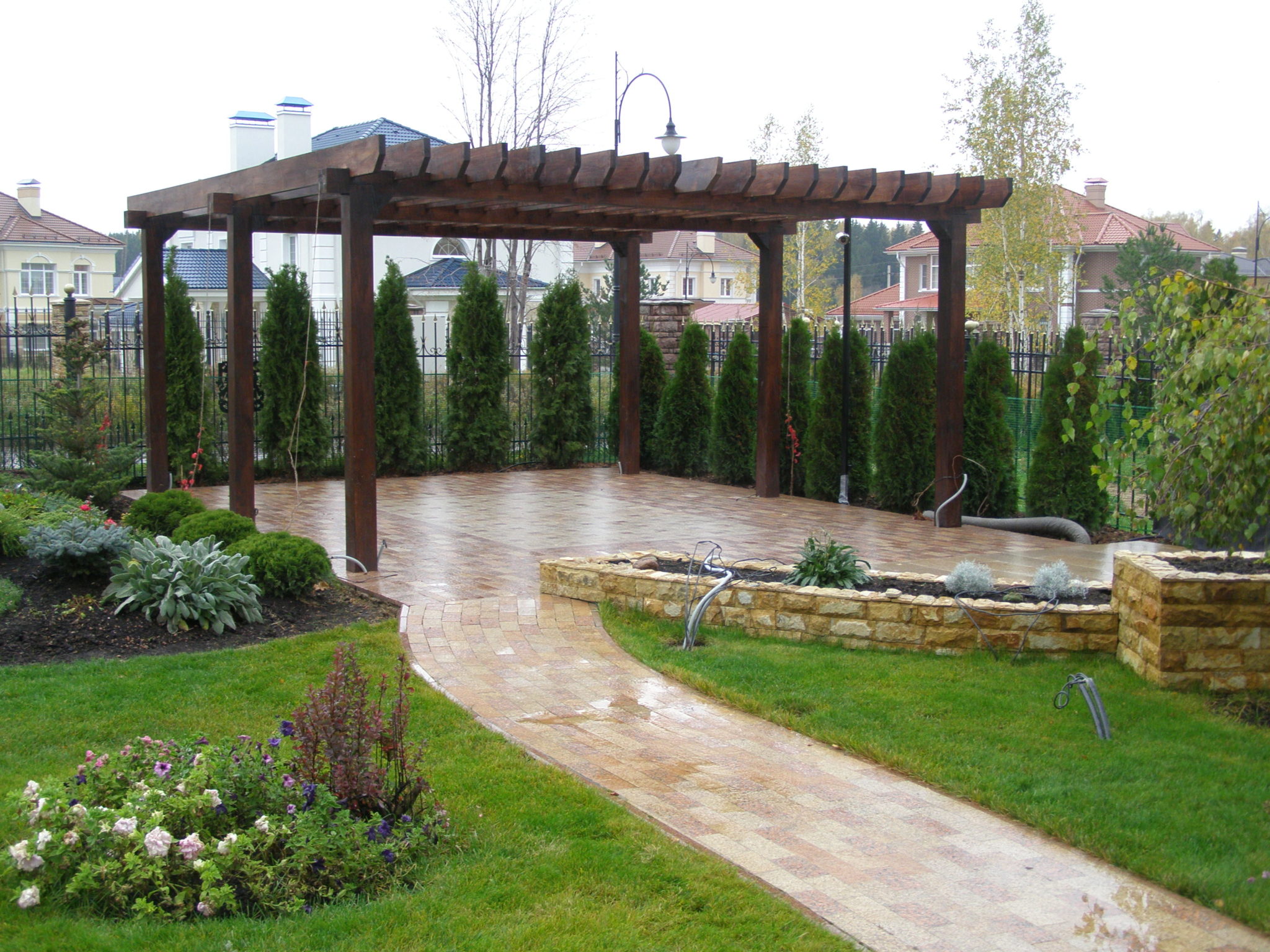
When plants, wood, or cloth cannot take your interest in your patio cover, give the fiberglass a go. It shelters you from the rain yet still allows the sunlight to pass. The plus of fiberglass or polycarbonate is that it doesn’t wither even in the hottest weather. However, less expensive fiberglass tends to wear out of color after a year or two. The good news is that some polycarbonate traps air between the bottom and top panels and creates magic insulation.
Fiberglass is also impermeable to water because of its lack of pores, and an annual power washing is all you require for maintenance. The same can be said for fiberglass, which can crack if subjected to excessive wind, snow, or freezing and thawing conditions.
However, fiberglass is exceptionally sturdy, unlike vinyl or wood, allowing for greater spans to be covered by single beams. Whereas a vinyl pergola can soften and sag after being subjected to snow loads and fluctuating temperatures, a fiberglass pergola will retain its rigidity and symmetry.
The downside is, Fiberglass pergolas can cost anywhere from $3,000 to $8,000, depending on size, due to their increased durability.
1. The Humble Shade Sails
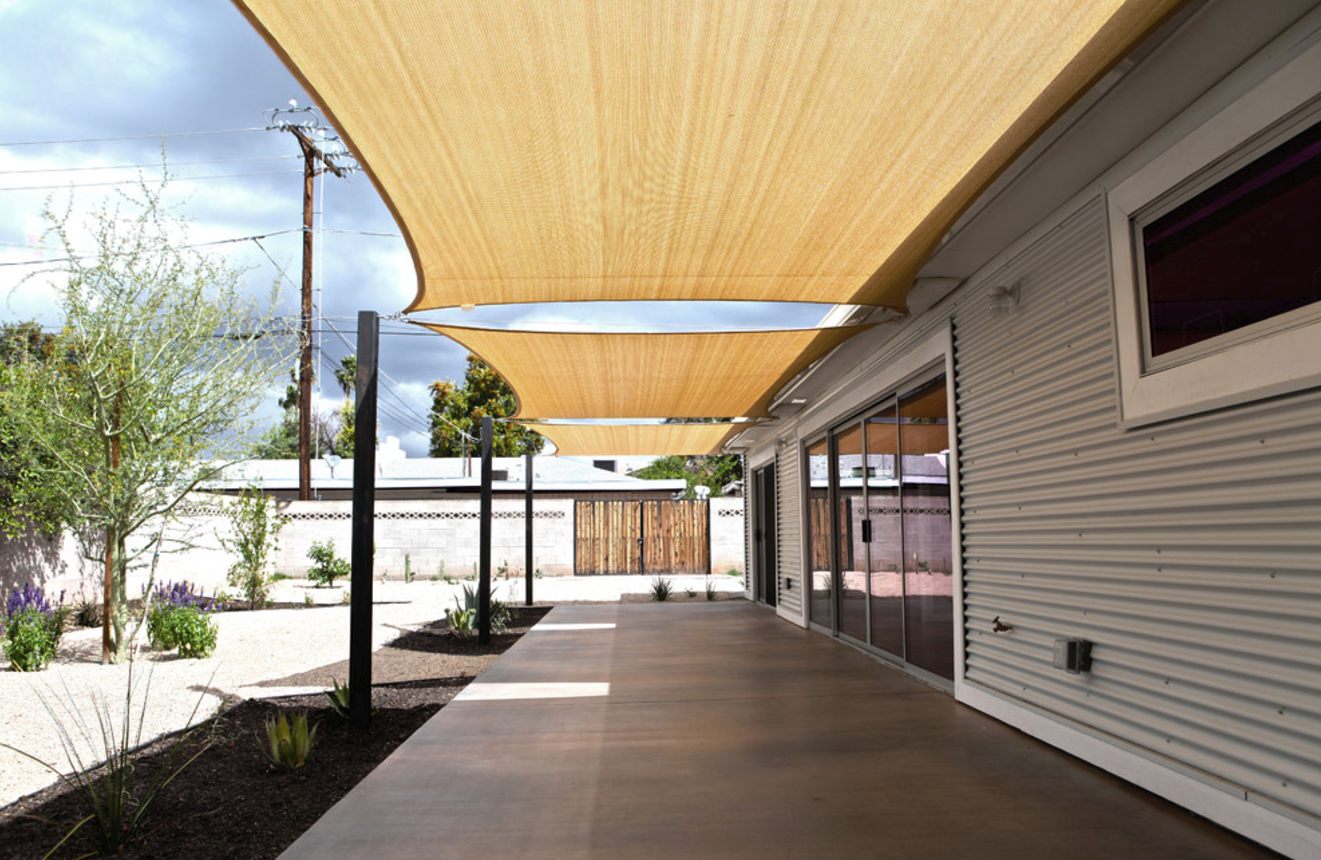 The Ranch Mine, a husband-and-wife design duo, used corrugated steel to wrap a house and Cohills Enviro Stain to stain the concrete floors. Under the eaves, the shade sails’ anchors were fastened to the roof trusses using ropes. Because they don’t require a building’s worth of brick and mortar, prefab options, and a construction crew’s labor, shade sails can be a more cost-effective alternative to permanent structures.
The Ranch Mine, a husband-and-wife design duo, used corrugated steel to wrap a house and Cohills Enviro Stain to stain the concrete floors. Under the eaves, the shade sails’ anchors were fastened to the roof trusses using ropes. Because they don’t require a building’s worth of brick and mortar, prefab options, and a construction crew’s labor, shade sails can be a more cost-effective alternative to permanent structures.
Pergola is the best structure to have in a backyard. You can modify it into anything you can imagine, such as planting climbing vines, using a curtain, or attaching fiberglass on top. When the sunlight is not a big deal, this style will shade you against the sun without blocking it completely. A pergola can make your afternoon activity outside more enjoyable when designed and oriented correctly. A pergola in your backyard is a quick way to add a classy touch to your outdoor area. For more inspiration, check out our recommended links below.
References:
10. Littlehouseonthecorner.com
9. Bloomingbackyard.com
8. Diy.dunnlumber.com
7. Architecturaldigest
6. Homebuilding.co.uk
5. Homedit.com
4. Homivi.com
3. Homivi.com, Familyhandyman.com
2. Homivi.com, Outbacklandscapeinc.com
1. Thespruce.com